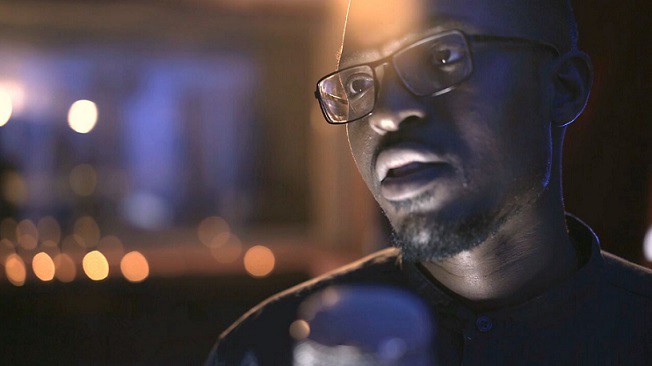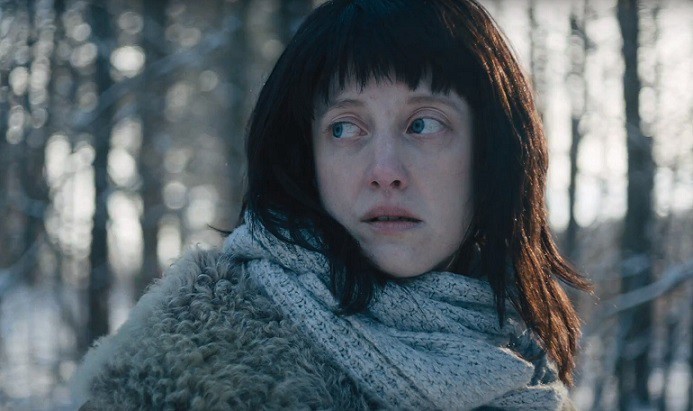Rubika Shah is a director, writer, and journalist. She has directed a number of documentary shorts for the BBC which explore the works of Spike Lee, Gore Vidal, and others. Her documentary short about David Bowie’s “Let’s Dance” music video and MTV’s birth screened at the Berlin International Film Festival, Tribeca Film Festival, Hot Docs, and BFI London Film Festival.
“White Riot: London” will premiere at the 2017 Berlin International Film Festival on February 14.
W&H: Describe the film for us in your own words.
RS: “White Riot: London” tells the forgotten story of London in 1977 — when politics and youth culture collided, at the height of punk — through the words and graphics of a punk fanzine.
“White Riot: London” had its world premiere at Sundance and will have its European premiere at Berlin. The short is a companion piece for our [upcoming] feature doc.
W&H: What drew you to this story?
RS: I love finding archive [materials]— be it old super 8, 16mm, 35mm, VHS/Beta, or stills — and finding new ways to reinterpret them. With “White Riot: London,” we wanted to create a film that spoke to younger audiences. We collaborated with two spoken word artists (urban poet Nezyah and YouTube star Suli Breaks) and a female singer-songwriter (Nadine Shah — no relation!). We met them in a recording studio in Peckham, where they used their own lyrical style to reimagine passages from the punk fanzine.
I also have a personal connection to the story. There are chapters of my contemporary history that are missing. We hear all about the 1970s, but we don’t talk about how dangerous it was for people of color and for the Jewish community.
Members of a violent neo-Nazi political party were terrorizing the streets — quite literally, all over the U.K. — whilst securing airtime on the BBC and other mainstream television and radio. Their motto,“Keep Britain White,” was borrowed from the British fascists from the 1930s.
In 1976, a motley crew of artists decided to do something about it — and that’s when the fanzine was born.
W&H: What do you want people to think about when they are leaving the theater?
RS: “White Riot: London” is an experimental and experiential film. I hope that audiences leave with a feeling of what it was like in Britain in the late 1970s.
I hope the contemporary narrative — and implications regarding what’s happening today, 40 years on, with minorities, immigrants, and refugees, globally — connects as well.
W&H: What was the biggest challenge in making the film?
RS: Making the budget work. We used a lot of VFX, which obviously stretches the budget and everyone’s time considerably.
W&H: How did you get your film funded? Share some insights into how you got the film made.
RS: The film was commissioned by Film London. After a lengthy one-month interview and pitching period, 20 teams are shortlisted for development, but ultimately there are only 10 places. The budget from Film London only covered a portion of the production and post costs. We created a lot of VFX for this film, mixing archives and graphics from the punk ‘zine, plus there were all the post costs.
Most of the crew understood that this was a very low-budget but high-end short — and shared our vision. In the end, we put our own money into the film.
W&H: What does it mean for you to have your film play at Berlin?
RS: Screening at Berlin is a fantastic platform to launch “White Riot: London” — and the feature project.
It is also a massive validation of our work. I collaborated with two females DPs and a female composer, and we have succeeded in making a film that is finding audiences through some of the most respected film festivals in the world. I hope it inspires other women to do the same.
W&H: What’s the best and worst advice you’ve received?
RS: Best advice: Persistence is key. Don’t be put off by people who appear to be ignoring you or too busy. Figure out your goal and stay on track. If one road is blocked, find another route. I started out editing online video news — which was the closest I could get to working in the film business at the time. It helped me sharpen my storytelling skills through the editing process.
Worst advice: Listen to bullshit producers, especially when you’re first starting out. (Although this could also be a positive, as it toughens you up. You need to have a thick skin to work in film.)
W&H: What advice do you have for other female directors?
RS: Once you figure out what your goal is, stay on track. It is easy to get distracted by smaller opportunities. For me, the feature version of “White Riot” is the goal so right now I need to spend as much time as I can on it.
We are a small team at Smoking Bear Productions. Full time, it’s basically me and my producer, Ed Gibbs. “White Riot” is a hybrid animation, live-action, and archive feature doc, so we have our work cut out for us. It’s an ambitious project, but a fun one as well — and we have a lot of great support in helping us achieve our vision.
W&H: Name your favorite woman-directed film and why.
RS: Right now, it’s Andrea Arnold’s “American Honey.” It is such a unique, funny, sad, dramatic, cinematic, auteur-driven, gutsy film. The fact she hasn’t received a Best Director nomination — not even in the U.K. at the BAFTAs — is sad.
If I could add another, it would be “Little Miss Sunshine,” which was co-directed by Valerie Faris. The film is a lesson is screenwriting and filmmaking — and still lights up my day, 10 years after it came out.
I would also like to give a shout-out to Destiny Ekaragha and her super indie film “Gone Too Far.” I wish I could write comedy like that.
W&H: Have you seen opportunities for women filmmakers increase over the last year due to the increased attention paid to the issue? If someone asked you what you thought needed to be done to get women more opportunities to direct, what would be your answer?
RS: Let’s be honest, the profile of a director is still most likely white and most certainly male. I have had at least half a dozen people say to me, “You don’t ‘look’ like a director.”
I think the people at the top are more aware of female filmmakers and those of diverse heritage, sexuality, etc. But I am not sure things are changing that quickly. Filmmaking is such an expensive career route, that I think a lot of diverse filmmakers drop out, as do women — to have children, for example. It would be great to see broader childcare costs factored into public funding budgets.
We are all excited to hear how the 50–50 funding distribution will continue to work in Sweden. I would say to women: Don’t be disheartened if you get knocked back. Also, team up with male producers (I can recommend mine!) and collaborators, as well as women. The more we work together with men, the better. We also need men to speak up for us — as well as women. So rather than women-only panels talking about women in film, let’s see men putting their two cents in as well.







